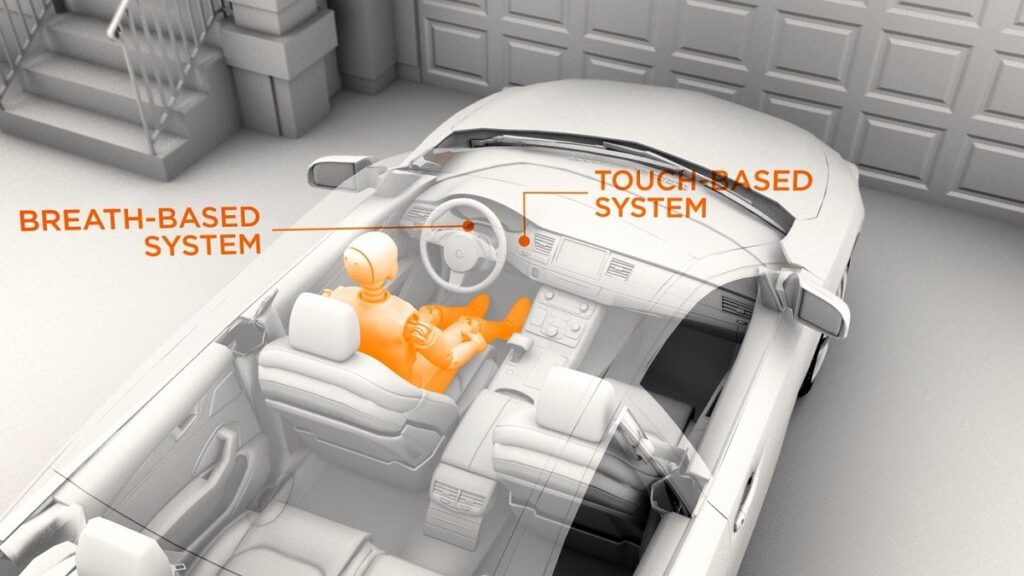GLEN BURNIE, Md. (June 23, 2022) – The Maryland Department of Transportation Motor Vehicle Administration (MDOT MVA) recently concluded its participation in a pilot program for technology designed to help keep drivers off the road. The program, conducted in partnership with the Driven to Protect Initiative, collected on-road data to help improve alcohol detection technology that could be installed in future vehicles to make our roads safer.
Driven to Protect is a public-private partnership between the state and proponents of a new breath alcohol detection system known as the Driver Alcohol Detection System for Safety program. The program works by measuring the level of alcohol on a driver’s breath as they exhale naturally. Small sensors built inside vehicle panels analyze breath molecules using infrared light. If the driver’s breath alcohol level is above a certain range, the car won’t move. The sensor is programmable, from a zero-tolerance policy for teen drivers to a breath alcohol concentration of 0.08%, the legal limit.
In 2019, this technology was installed in eight MDOT MVA vehicles, including a demonstration vehicle that was used as an educational tool at safety and community events. The on-road pilot program provided valuable information on how the technology holds up to everyday wear and tear, changes in weather, and other elements.
“Maryland has always used a comprehensive approach to address highway safety,” said MDOT MVA Administrator Chrissy Nizer, who also serves as Governor Larry Hogan’s Highway Safety Representative. “We are committed to ending preventable fatalities on our roadways by influencing behavioral change, addressing roadway design, and supporting the development of life-saving technology.”
At the completion of the pilot program, MDOT MVA’s vehicles had collected 93,558 samples over 5,230 hours – despite the program being temporarily placed on hold in 2020 due to the COVID-19 pandemic. The data will help the manufacturer better understand wear and tear driving factors that affect sensor performance and will help improve future iterations of the prototype sensors.
“Our MDOT MVA team constantly advocates for ways to save the lives of Marylanders and travelers across the nation,” said MDOT Secretary James F. Ports, Jr. “This pilot program resulted in real-world data showing how these sensors stand up to daily wear and tear. I’m proud of MDOT MVA’s role in another effort to promote highway safety.”
According to the National Highway Traffic Safety Administration (NHTSA), approximately one-third of all traffic crash fatalities in the United States involve drunk drivers. This equates to an average of more than 10,000 people each year. Maryland averages more than 500 fatalities each year, one-third of them attributed to impaired driving.
According to the Insurance Institute for Highway Safety and Highway Loss Data Institute, the implementation of alcohol detection technology could save approximately 9,400 lives annually. The Driver Alcohol Detection System for Safety research program is supported by the Automotive Coalition for Traffic Safety, which represents the world’s leading automakers, as well as the NHTSA and MDOT.

